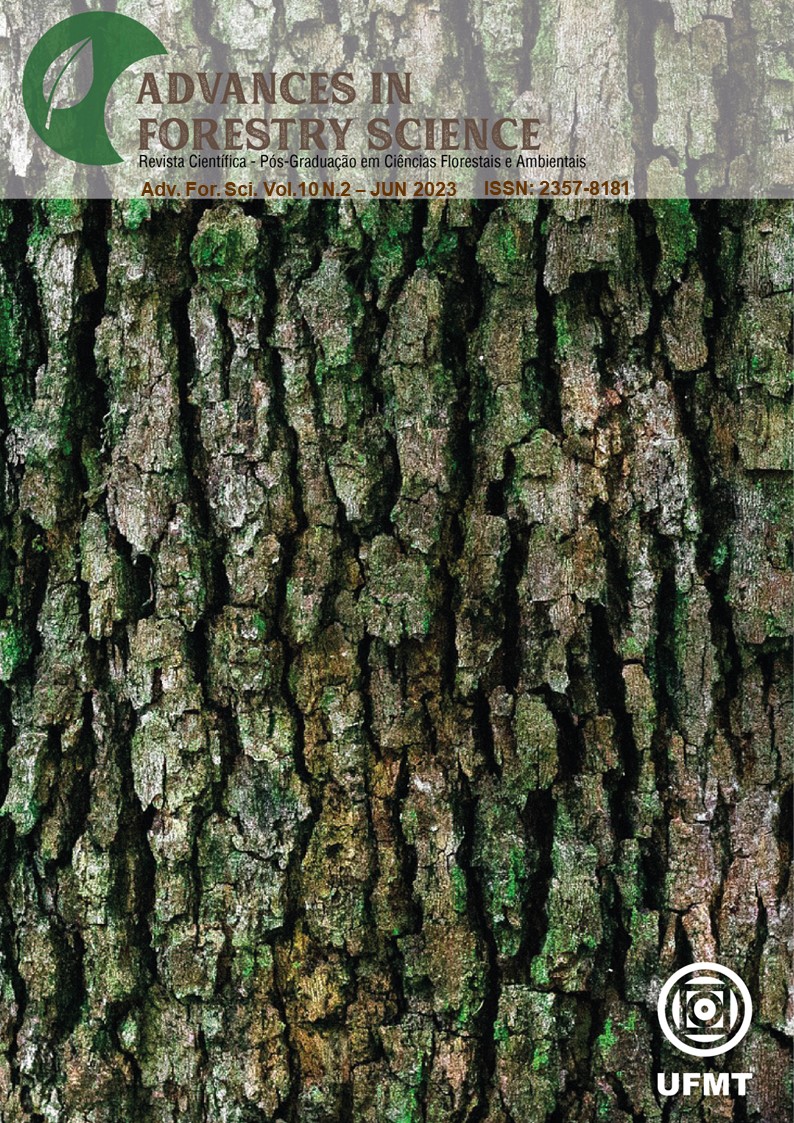Geostatistical modeling of commercial volume and assortments in Pinus taeda L. stands
DOI:
https://doi.org/10.34062/afs.v10i2.13499Abstract
To increase the accuracy of the results, it is necessary to use tools in addition to the traditional ones. Thus, the present work aimed to model the commercial volume and assortments of Pinus taeda L. using geostatistics. Geostatistics assumes that closer sampling units in geographic space are more similar. The study area is a silvicultural project of the Pinus taeda L. species with 145.3 ha, implemented in 2002, with a spacing of 3 m x 2.5 m. In this project, a first mixed thinning was carried out at 9 years old, in which the density of individuals was reduced by 50% and a second selective thinning at 14 years old, removing 50% of the remaining individuals. Data were collected in 2020, and 30 sampling units were measured in the field with a circular shape with an area of 600 m². For modeling height at different diameters and assortments, 30 trees in the stand were scaling. Six models of height-diameter relation were tested, being the models of Stoffels, Trorey, Curtis, Campos and Leite, Azevedo and Henriksen. To estimate the assortments, the 5th Degree Polynomial was used. The semivariances were calculated in order to verify the spatial dependence of the variables. The geostatistical modeling of commercial volume and assortments of Pinus taeda L. was possible. The spatial mapping of assortments allows for better planning of harvesting activities, with greater accuracy of the geographic location of larger volumes.
Downloads
Downloads
Published
Issue
Section
License
All copyright must be assigned to the Federal University of Mato Grosso.

